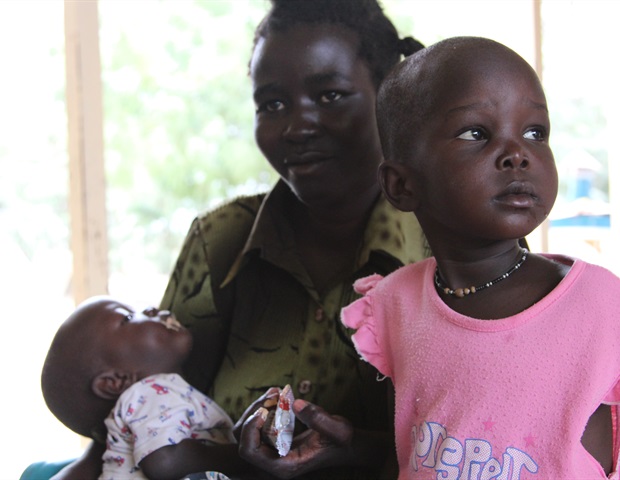
Almost a million individuals worldwide are plagued yearly by cutaneous leishmaniasis, a devastating pores and skin an infection attributable to the Leishmania parasite. Predominantly affecting weak populations in tropical and subtropical areas like North Africa and South America, this illness thrives in areas marked by malnutrition, poor housing and inhabitants displacement. Left untreated, it may possibly result in lifelong scars, debilitating incapacity and deep social stigma. Regardless of its world impression, there isn’t any vaccine-and current therapies are ineffective, poisonous and tough to manage.
A brand new research revealed within the journal Nature Communications on April 4, 2025, might rework how well being care suppliers method treating this disfiguring illness. A crew of researchers from the College of Maryland and the Centro Internacional de Entrenamiento e Investigaciones Médicas (CIDEIM) in Colombia found a option to predict whether or not a affected person affected by cutaneous leishmaniasis will reply to the commonest remedy, probably saving sufferers from months of pricey, ineffective and poisonous treatment.
It is generally stated that the treatment might be worse than the illness. That is very true with our present therapies of cutaneous leishmaniasis. These medicine have a excessive toxicity profile, so sufferers might really feel sick for weeks whereas being handled. There isn’t any assure that the remedy shall be efficient, so sufferers might cease remedy or go to one other physician to repeat the method. And even when they’re cured, they’re more likely to have a scar without end. That is the truth of leishmaniasis in Colombia and plenty of different international locations world wide.”
Maria Adelaida Gomez, microbiologist with CIDEIM and co-lead writer of the research
UMD Professor of Cell Biology and Molecular Genetics Najib El-Sayed, co-lead writer of the research, famous that the usual drug used to deal with the disease-meglumine antimoniate-typically fails in about 40-70% of sufferers it’s administered to.
“This failure fee holds even when sufferers full the total course of the remedy, which takes as much as 14 weeks,” El-Sayed stated. “Discovering out how efficient the treatment shall be on a affected person early on is essential as a result of it may possibly stop weeks or months of ineffective remedy and assist sufferers entry extra appropriate options a lot sooner.”
The crew discovered that sufferers who failed to answer meglumine antimoniate confirmed a particular sample of their immune system, a sustained inflammatory state referred to as a sort I interferon response. This response is often an important a part of the physique’s early response system in opposition to viruses, serving to cells detect a pathogen and recruiting sources to battle in opposition to it.
“Whereas this response is crucial for preventing some infections, we discovered that when it stays elevated for too lengthy, it may possibly intrude with the remedy and therapeutic course of in sufferers with cutaneous leishmaniasis,” El-Sayed defined. “This elevated sort I interferon response was noticed throughout a number of innate immune cell sorts we analyzed in affected person blood samples. By monitoring these adjustments all through the remedy course of, we recognized a transparent sample that distinguishes sufferers who efficiently get better from those that will not reply to straightforward treatment.”
The researchers additionally developed a complicated scoring system that may precisely predict remedy outcomes for newly identified sufferers utilizing superior machine studying methods. By analyzing the exercise of simply 9 genes, they may predict whether or not the remedy would work on a cutaneous leishmaniasis affected person with 90% accuracy.
“That is vital progress for well being care suppliers and scientists working to enhance outcomes for cutaneous leishmaniasis sufferers,” Gomez stated. “The illness is beginning to transfer to new locations comparable to the US, which suggests we want these sources greater than ever.”
Whereas the present check requires refined laboratory gear, the crew is already working to provide a extra transportable and user-friendly model of the expertise for docs to make use of within the subject. The researchers hope their new findings, notably concerning the sort I interferon pathway, could possibly be a promising avenue for growing new therapeutics for cutaneous leishmaniasis. Their conclusions signify a shift from extra conventional approaches -which often focus solely on eliminating the parasite-to remedy strategies that additionally contemplate the affected person’s pure immune responses.
“It is actually one of many first makes an attempt to translate laboratory findings of this illness into sensible purposes,” El-Sayed stated. “Understanding why some sufferers do not reply to remedy has been a serious problem in managing this illness. This work opens the door to precision medication and growing higher methods that may personalize remedy for a variety of sufferers.”
Supply:
Journal reference:
Gómez, M. A., et al. (2025). Innate biosignature of remedy failure in human cutaneous leishmaniasis. Nature Communications. doi.org/10.1038/s41467-025-58330-3.
